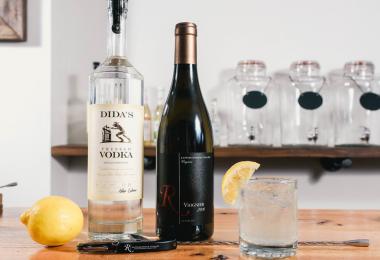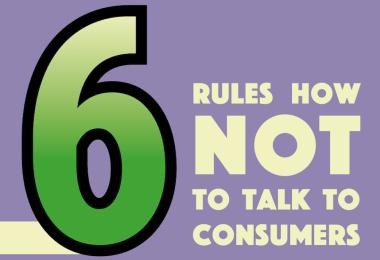When New York Times wine critic Eric Asimov suggested his readers try three mass-market wines, he got a reaction he didn’t expect: nearly 800 comments expressing anger, dismay and outrage. In a subsequent column, he explained why he had suggested his readers try Apothic, Meiomi and The Prisoner.
“Trying these popular bottles, I thought, would etch in stark relief the yawning chasm between mass-produced industrial bottles,” and “wines that are agricultural products”, he wrote. He added: “It may well be that a small group of consumers is able to enjoy both types of wines, but I would say these consumers are more the exception than the rule.”
Asimov is not alone in that belief. Whenever Meininger’s Robert Joseph goes online to praise popular, mass market brands for their ability to engage consumers, he immediately gets a barrage of opposition from people who think these types of beverages don’t deserve to be called wine.
Not only that, but his detractors argue there is no proof that consumers who drink branded products will ever switch to premium wine and so they do not offer a pathway into the world of wine.
What does the evidence say?
It’s certainly true there is little to no academic evidence that would prove the proposition either way. But there are people who know the answer—and they work at the big companies that produce mass-market brands. Companies such as E&J Gallo, Treasury Wine Estates and others don’t just have big brands in their portfolios, but also fine wines from which they earn higher margins. It’s in their financial interest to move consumers up from entry-level products.
Not only that, but the biggest companies employ in-house analysts and researchers who spend their days researching wine consumers.
Meininger’s spoke to several of the big companies, and they all agree that the relationship between different types of wines is complex. It’s not always the case that people use big brands as a stepping stone to higher things, but nor is it true that some people adopt big brands while others prefer hand-crafted wine and never the twain shall meet. The thing that drives wine choice can be summed up in one word: occasion.
Paul Turale, head of premium wine at Casella Family Brands, which makes both [yellow tail] and premium Barossa Valley wines, told Meininger’s he believes people drink according to occasion and take their cues from people around them. Someone who drank [yellow tail] as a student at university will quickly realise that the same wine is not appropriate for professional occasions, where the Barossa Valley wines are the better choice. However, the [yellow tail] might come out again at the weekend.
Dr Andreas Brokemper, CEO of Henkell Freixenet, agrees that occasion is significant, as is affordability and age. “If everybody could afford a Champagne, they would drink a Champagne,” he says, adding that many consumers will buy Champagne for special occasions and then go back to drinking Prosecco or cava the rest of the time. He notes that while younger consumers do not have the money for Champagne, they also have a sweeter palate and need wines that satisfy that.
As for Treasury Wine Estates, which offers branded wines such as 19 Crimes as well as Penfolds Grange, the answer is clear: “Choice is driven by the need of the occasion when they’re buying their wine,” says Kirstie McCosh, European marketing director. “The need drives the choice.” In a casual environment, the big brand might be appropriate. On a formal occasion, out comes the vintage Barolo.
Stephanie Gallo, chief marketing officer of E&J Gallo, strongly agrees. “What our research shows is that consumers drink at all price points,” regardless of their socio-economic standing. “I look at my own behaviour; it’s very common for wine lovers.” Even the very rich don’t open Grand Cru wines when watching television – they choose something more everyday, like Gallo’s Barefoot, that typically retails for less than $10.
“When I look at Barefoot, it’s the largest brand in the world,” says Gallo. “I’ve never seen anything like the average demographics of Barefoot; it’s young consumers, older consumers, wealthy people, people on a fixed income.” She says wealthy people may choose it for their casual drinking, and then drink a fine wine on weekends or when going out to dinner.
Where do connoisseurs come from?
The gateway each consumer uses to enter the wine category will have a big impact on what they end up drinking, as will who is around them modelling wine behaviour. Someone who grows up in a house with a cellar and parents who drink wine regularly, or who first discovers wine on a gap year to Italy, will probably bypass entry level products altogether. Yet while that means they may never drink big brand wines, it won’t by itself turn them into the sort of wine drinker who uploads bottle shots to Instagram and subscribes to wine magazines.
For Treasury’s McCosh, becoming a fine wine connoisseur is a deliberate choice people make, rather than something that naturally happens after enough wine exposure. “It’s to do with the level of involvement you want to have,” she says. “The more knowledgeable you are, the more experimental you are.” It’s not necessarily tied to wealth, either. “There are socialites who absolutely enjoy wine and drink across the spectrum, but it’s almost secondary to the occasion where they’re drinking.”
The key to creating a wine drinker is giving them somewhere to make that first wine discovery. Gallo says her company takes its wine to places and events where wine is not normally promoted, for example World Pride. “We like to take wine to wine deserts.”
One experience with wine generally isn’t enough to turn someone on to wine – people need to taste wine often enough for them to build an identity as a wine drinker. This is where recognisable brand and varietal names can play a role, to build confidence. “Once you get into the category, you’re going to start exploring,” says Gallo, adding that making wines that are palatable for novices is extremely important. “We can engage in these philosophical debates,” she finishes. “But we have to grow the category.”
Felicity Carter
This article first appeared in Issue 5, 2019 of Meininger's Wine Business International magazine, available in print or online by subscription.
You can also sign up to our free newsletter








